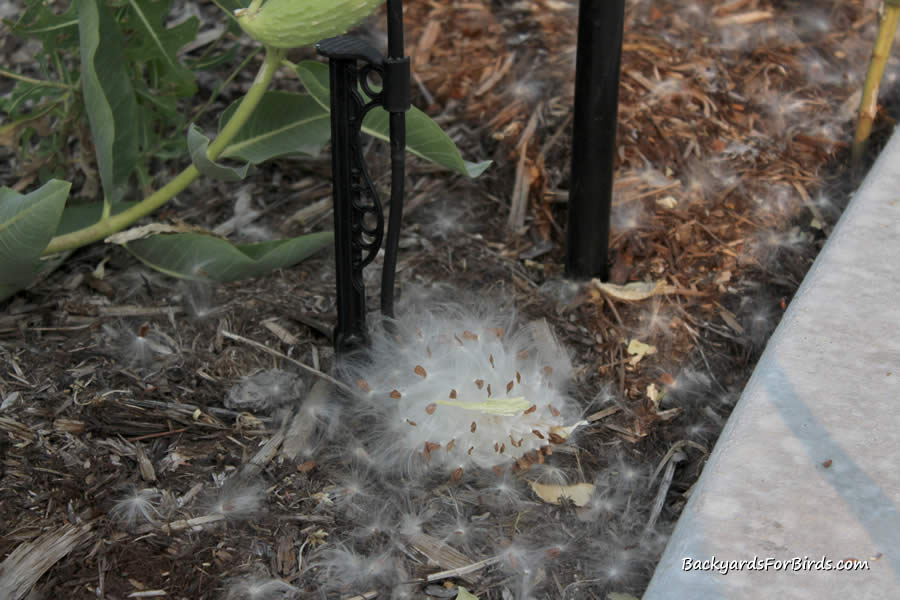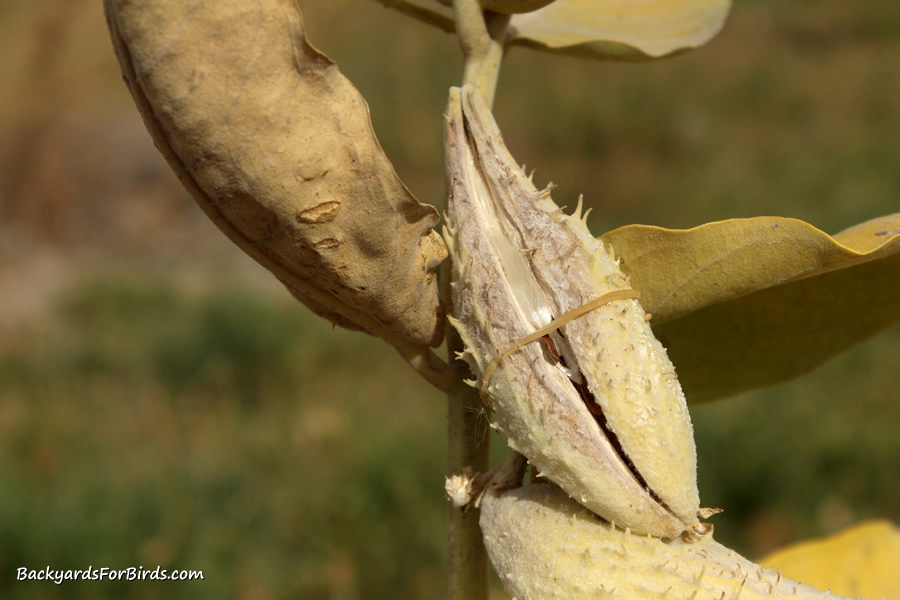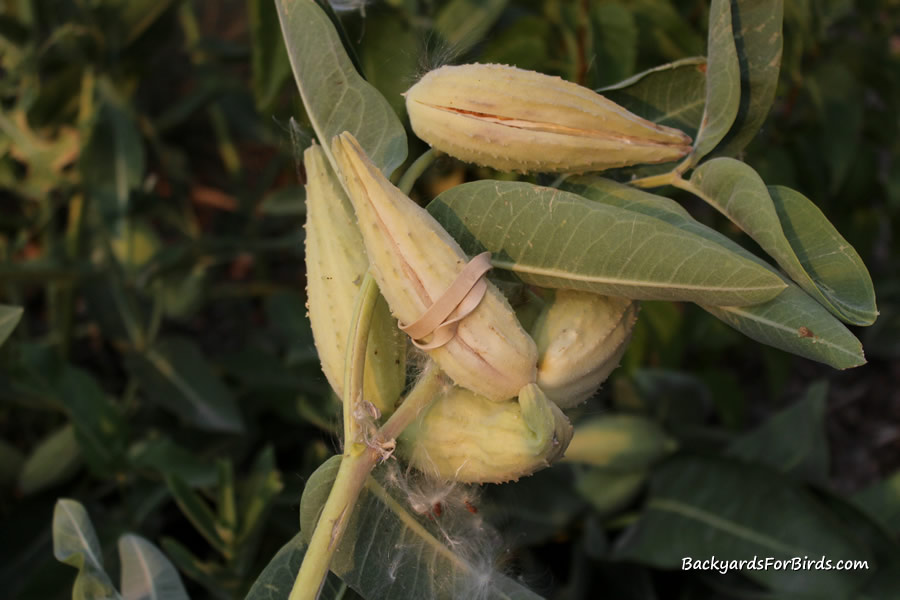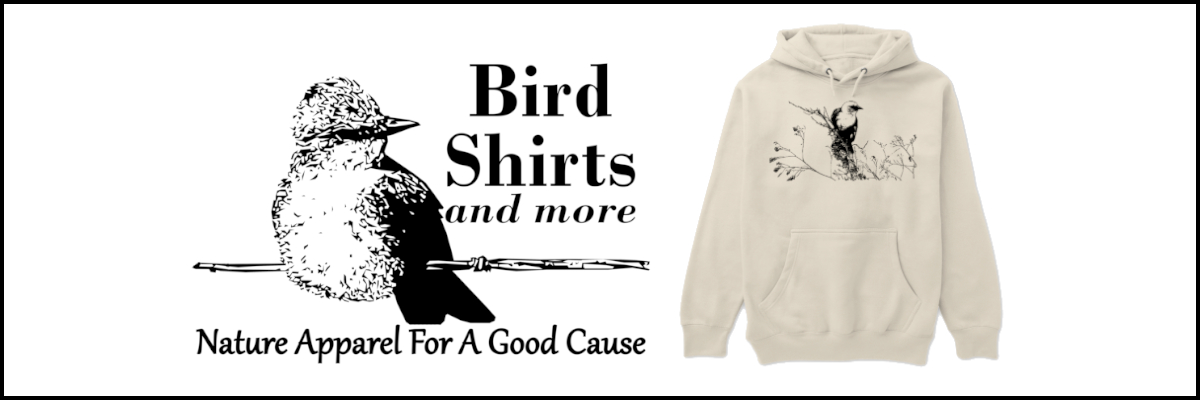To the casual observer, it looks like a weed, but to the avid nature lover, it is a vital piece of the monarch butterfly’s literal existence.
Milkweed is certainly one of the most misunderstood and much-maligned plants in nature, and not without good reason mind you.
This interesting but very fruitful plant is quite prolific, to say the least, producing and spreading seeds that casually drift on a soft fall breeze until finding a new resting place to germinate and grow.
It is this success of the milkweed plant and how easily it propagates that has also given it a bad reputation with those who don’t understand the irreplaceable monarch-milkweed relationship.

Without question, milkweed can and does spread very easily by seed, allowing it to shoot up and grow in some very unwanted and unwelcomed places, like the neighbor’s lawn, for example.
There is a simple step, however, we all as stewards of the monarch butterfly and our urban habitats can take to help this unwanted spread throughout the neighborhood.
And without planting milkweed in our own yards and in any other urban setting we can find, who knows if the monarch butterfly can rebound from its current and most sobering plunge in numbers the past few years.
Every single milkweed plant is needed to help the monarch rebound, but at the same time, we need to be careful and not let this plant sprout where it can and does get a bad reputation.
First and foremost, the importance of the milkweed plant should be established here to show why we need this plant in the first place.
Simply put, monarch butterflies are solely dependent on the milkweed plant to lay their eggs on and for their caterpillars to eat as they grow and develop to the pupa stage.
There are numerous types of milkweed plants the monarch butterfly can and do lay their eggs on, but it is the milkweed plant, and only the milkweed plant the monarch butterfly will utilize for egg-laying and feeding their caterpillars.
No milkweed means no monarch butterflies, it’s just that simple.
Each summer, the milkweed plant grows and eventually blooms, attracting bees, butterflies, and even hummingbirds to partake of the sweet nectar it produces.

Eventually and after it has been pollinated by nature, the milkweed plant produces pods filled with seeds on a cotton-like umbrella.
This cotton-like design is how the milkweed seeds spread by wind, being extremely light in nature and easily moved from one location to another by a soft and gentle breeze.
One single milkweed plant can produce hundreds and hundreds of seeds that can and will eventually mature, burst, and possibly spread all over the neighborhood.
And if you are like us, a few seeds sown a couple of years ago can result in dozens of healthy plants that are quite prolific in seed production in their own right.
We literally tossed out a couple of small handfuls of showy milkweed seeds 3 years ago and now we have more milkweed plants than we ever dreamed.
In order to combat this truly effective method the milkweed plant utilizes to spread, we can take a simple step before the seed pods mature and burst.
To keep milkweed seeds from spreading, simply wrap a rubber band around the seed pod when they are still soft and green so when it’s time to open and disperse, they can’t.

This will allow for the milkweed seeds to be controlled and harvested before they can spread where they might not be welcomed.
We do this each year so we can offer seeds to anyone that also wants to help the ailing monarch butterfly population and plant them in other locations we find that are suitable for growing the milkweed plant.
Now milkweed can and will spread locally, meaning in the same general area as the established plant, by rhizome, a shallow horizontal root system.
But it is the seed pods that cause the milkweed to leave the immediate area and sometimes spread hundreds and hundreds of yards or more away.
This is where we need to be good stewards and help keep the milkweed from spreading to unwanted locales, one of the main ways it gets deemed an unruly and noxious weed by the uninformed.
Placing a simple rubber band on the milkweed seed pod while it’s still green can help keep it from spreading and also help keep the neighbors happy.

And by doing so, this small effort on our part might just win over a neighbor or two in planting milkweed for themselves when they see it can be controlled with a little effort in the fall.
If you are like us and are a lover of nature in the backyard, birds, butterflies, bees, and so forth, we offer you to visit our subscribe page and sign up for email notifications for future blog posts.
We love nature, especially when we can enjoy it in our own backyards, and hope you do too.
There is just nothing finer than watching birds or butterflies in the backyard garden that helps take the stress out of our daily life.


